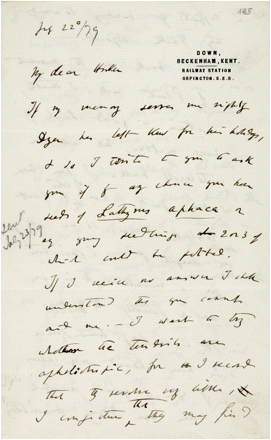Charles Darwin’s fascination and frustration with the evolutionary events associated with the origin and early radiation of flowering plants are legendary. In a letter to Oswald Heer, a famous Swiss botanist, and paleontologist, Darwin wrote: “the sudden appearance of so many Dicotyledons in the Upper Chalk appears to me a most perplexing phenomenon to all who believe in any form of evolution, especially to those who believe in extremely gradual evolution, to which view I know that you are strongly opposed”. Heer discussed about the early angiosperm fossil record with Darwin, in a letter dated 1 March 1875: “if we say that the Dicotyledons begin with the Upper Cretaceous, we must still concede that this section of the vegetable kingdom, which forms the bulk of modern vegetation, appears relatively late and that, in geological terms, it underwent a substantial transformation within a brief period of time.”
Darwin’s defense of a gradualist perspective led him to suggest that prior to the Cretaceous record of flowering plants, angiosperms had slowly evolved and diversified on a remote landmass. On 22 July 1879, in a letter to Joseph Dalton Hooker, Darwin refers to the early evolution of flowering plants as an “abominable mystery”. Nearing the end of his life, he wrote to Hooker another letter about a lost fossil record in the earliest phases of angiosperm diversification: “Nothing is more extraordinary in the history of the Vegetable Kingdom, as it seems to me, than the apparently very sudden or abrupt development of the higher plants. I have sometimes speculated whether there did not exist somewhere during long ages an extremely isolated continent, perhaps near the South Pole.”

Letter from Charles Darwin to Joseph Dalton Hooker, written 22 July 1879 (provenance: Cambridge University Library DAR 95: 485–488)
While the oldest records of the different groups of angiosperms are still in discussion, the outcrops of the Baquero Group, located in Argentinean Patagonia, contain one of the richest and most diverse Early Cretaceous floras in the Southern Hemisphere. The unit comprises three formations: Anfiteatro de Tico, Bajo Tigre and Punta del Barco. The first reports of angiosperm remains for the Anfiteatro de Tico Formation were made in 1967. The dominant types are Clavatipollenites, and Retimonocolpites.
Pollen grains could enter into the fossil record by falling directly into swamps or lakes, or being washed into them or into the rivers and seas. The ones which are not buried in reducing sediments will tend to become oxidized and be destroyed. They reflects the ecology of their parent plants and their habitats and provide a continuous record of their evolutionary history. Gymnosperms pollen often is saccate (grains with two or three air sacs attached to the central body), while Angiosperm pollen shows more variation and covers a multitude of combinations of features: they could be in groups of four (tetrads), in pairs (dyads), or single (monads). The individual grains can be inaperturate, or have one or more pores, or slit-like apertures or colpi (monocolpate, tricolpate).
Clavatipollenites pollen grains are interpreted as related to the modern family Chloranthaceae. The genus was established by Couper for dispersed monosulcate pollen grains recovered from the Early Cretaceous of Britain. Currently, the genus has a very broad definition. The genus Retimonocolpites include elongated to subcircular semitectate, columellate and microreticulate pollen grains with well defined monocolpate aperture (Llorens and Loinaze, 2015). The new species Jusinghipollisticoensis sp. nov. represents one of the oldest records of trichotomosulcate, and extends the geographical distribution of Early Cretaceous trichotomosulcate pollen grains to southern South America.
The data also indicates strong similarities between the Baquero Group assemblages and other coeval units from Argentina, Australia and United States.
References:
M. Llorens, V.S. Perez Loinaze, Late Aptian angiosperm pollen grains from Patagonia: Earliest steps in flowering plant evolution at middle latitudes in southern South America, Cretaceous Research 57 (2016) 66-78
Archangelsky, S.,et al. (2009). Early angiosperm diversification: evidence from southern South America. Cretaceous Research, 30, 1073-1082.
Doyle, J. A., & Endress, P. K. (2014). Integrating Early Cretaceous fossils into the phylogeny of living Angiosperms: ANITA. Lines and relatives of Chloranthaceae. International Journal of Plant Sciences, 175, 555-560.


Pingback: Darwin and the flowering plant evolution in South America. | First Night History
Pingback: Whewell’s Gazette: Year 2, Vol. #17 | Whewell's Ghost
Pingback: Darwin and the flowering plant evolution in Sou...
Pingback: Whewell’s Gazette: Year 3, Vol. #26 | Whewell's Ghost